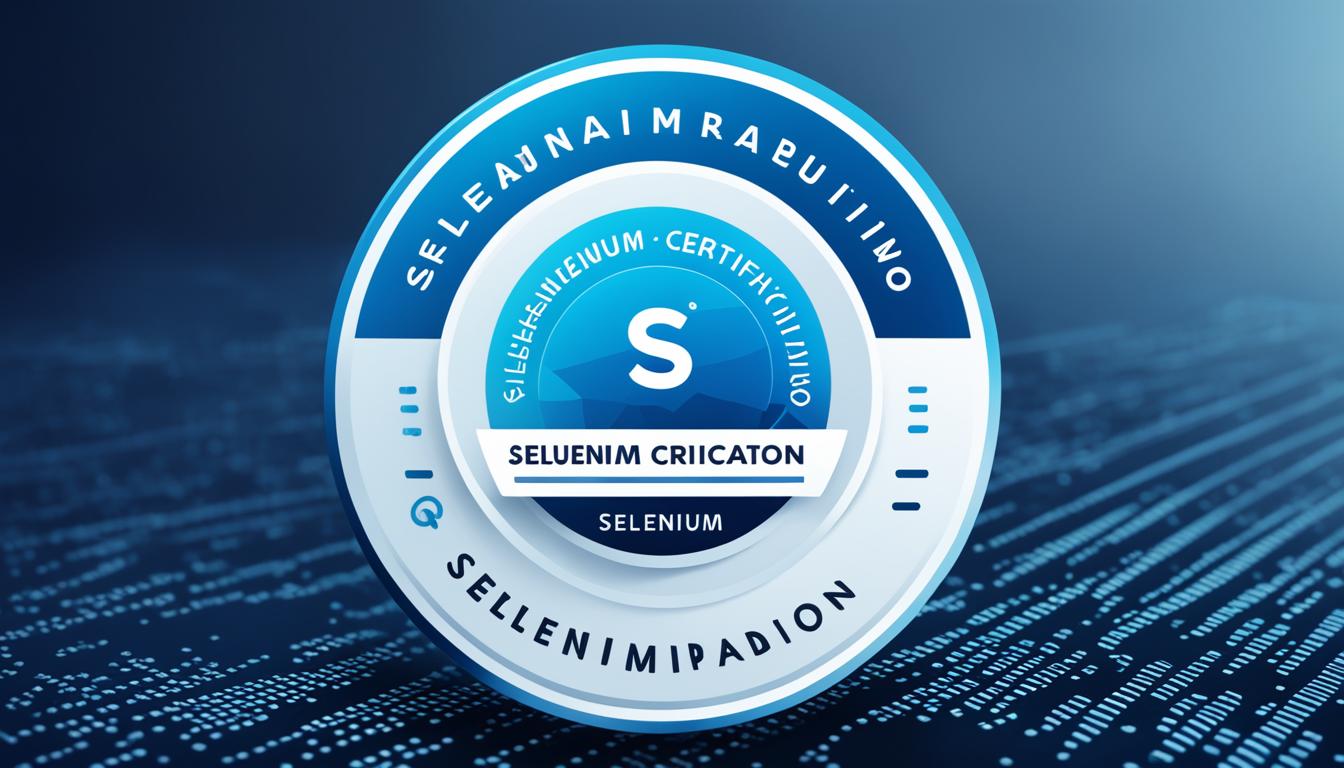Continuous Integration/Continuous Deployment (CI/CD) is a powerful strategy that can enhance your DevOps practices and accelerate your software delivery process. By automating testing, code integration, and deployment tasks, CI/CD enables a quicker and more efficient development cycle.
At [Company Name], we understand the importance of efficient software delivery and agile development methodologies. That’s why we believe that embracing CI/CD and implementing best practices can revolutionize your development process and drive continuous improvement.
In this article, we will explore the key concepts and best practices of CI/CD, providing insights into how it can benefit your organization and improve software delivery. Let’s dive into the world of CI/CD and discover how it can transform your DevOps workflow.
Key Takeaways:
- CI/CD enables faster and more efficient software delivery.
- Automating testing, code integration, and deployment optimizes the development process.
- Implementing CI/CD can drive continuous improvement in your software development process.
- Choosing the right CI/CD pipeline tools is crucial for streamlining your DevOps workflow.
- Embracing CI/CD can enhance collaboration and code quality in your organization.
What is Streamline?
Streamline is an innovative approach that combines branching, continuous integration, and continuous deployment to revolutionize the software development process. It is designed to enable fast development and release cycles, boost developer confidence in code quality, and reduce complexity.
With Streamline, development teams can start small and easily scale as the project grows. By limiting branches to feature and trunk, Streamline ensures a streamlined workflow that promotes efficient collaboration and seamless integration.
One of the key components of Streamline is continuous integration (CI), which automates the testing and code integration process. By running automated functional tests and creating versioned Docker images, CI helps maintain code quality and facilitates continuous deployment.
Streamline promotes the use of pull requests to trigger the CI pipeline. Pull requests serve as a mechanism for code review and collaboration among team members. When a pull request is initiated, the CI pipeline is triggered, running functional tests and generating a versioned Docker image that can be deployed in various environments, from demo to production.
“Streamline provides development teams with a powerful framework that enhances efficiency and code quality. By combining branching, continuous integration, and continuous deployment, Streamline enables teams to deliver software faster and with greater confidence.”
Implementing Streamline within your development process empowers your team to effectively manage code changes and deliver high-quality software at an accelerated pace.
Benefits of Streamline:
- Streamlined workflow for faster development and release cycles
- Increased developer confidence in code quality
- Reduced complexity through a simplified branching model
- Efficient collaboration and code review through pull requests
- Automated functional testing and versioned Docker image creation
- Seamless deployment to various environments
Streamline Branching Model:
| Branch Types | Description |
|---|---|
| Trunk | The main branch that represents the stable, production-ready code. |
| Feature | Branches created by developers to work on specific features or changes. |
When developers want to work on a new feature or make changes, they create a feature branch based on the trunk branch. They can then make the necessary changes and raise a pull request to merge their changes back into the trunk branch.
Once the pull request is initiated, the CI pipeline is triggered, running all the necessary functional tests and creating a versioned Docker image. This ensures that the changes are thoroughly tested and a releasable version of the code is generated.
Streamline empowers development teams to deliver software more efficiently, with improved code quality, and in alignment with the fast-paced demands of modern software development.
Why Choose Streamline Over GitFlow?
While GitFlow is a popular branching model, it can sometimes be complex and overhead. At our company, we recommend using Streamline as a simpler alternative that prioritizes simplicity and robustness. Unlike GitFlow, Streamline limits branches to feature and trunk, reducing complexity and minimizing the risk of running outdated code in Pre-Prod and Staging environments.
By adopting Streamline, developers can work more efficiently and have greater confidence in the quality of their code. With a streamlined approach, developers can focus on writing clean code that adheres to code standards and ensures smooth integration and deployment processes.
Comparing GitFlow and Streamline
| GitFlow | Streamline |
|---|---|
| Complex branching model | Branches limited to feature and trunk |
| Risk of running outdated code in Pre-Prod and Staging environments | Reduces the risk of running outdated code in Pre-Prod and Staging environments |
| Overhead in managing multiple branches | Simplifies the branching process |
| Increased complexity with parallel feature development | Focuses on trunk-based development for simplicity |
By choosing Streamline over GitFlow, teams can benefit from a simplified and more efficient development process, minimizing complexities, and ensuring that only reliable and up-to-date code is deployed to Pre-Prod and Staging environments.
Streamline offers a streamlined approach to version control, making it easier to manage code changes and maintain code standards. It encourages developers to work collaboratively and deliver reliable code with confidence.
Choosing the Right Approach for Your Team
When deciding between GitFlow and Streamline for your team, it’s important to consider the specific needs and preferences of your development process. While GitFlow may be suitable for complex project structures and large teams, Streamline offers a simpler and more straightforward approach for smaller teams or projects requiring a leaner development cycle.
Ultimately, the choice between GitFlow and Streamline depends on factors such as the size of your team, the complexity of your projects, and your specific requirements for code standards and Pre-Prod and Staging environments.
The Core Concepts of Streamline
The core concepts of Streamline revolve around branching and continuous integration (CI). Streamline starts with two types of branches: trunk, which represents the single source of truth, and feature, which represents new code. Developers branch off trunk to work on a feature, make changes, and raise a pull request back into trunk. Continuous integration involves an automated pipeline triggered by a pull request, running all functional tests, creating a Docker image, and deploying it to a test environment. The CI process ensures code quality and enables continuous deployment.
Branching Strategy
In Streamline, the branching strategy includes two main branches: trunk and feature. The trunk branch serves as the main branch, representing the stable and production-ready code. On the other hand, the feature branches are created by developers to work on specific features or bug fixes. These branches are later merged back into trunk after the changes have been reviewed and tested. By following this branching strategy, Streamline ensures a streamlined and organized development process.
Continuous Integration (CI)
Continuous integration plays a vital role in Streamline. It involves automatically building, testing, and merging code changes into the main branch. When a developer completes work on a feature branch, they create a pull request to merge it into the trunk. This triggers the CI pipeline, which includes various automated tests such as unit tests, integration tests, and end-to-end tests to ensure code quality. If the tests pass, the changes are merged into the trunk, enabling continuous deployment and maintaining a stable codebase.
To illustrate the core concepts of Streamline visually, refer to the following table:
| Core Concepts | Description |
|---|---|
| Branching | Streamline uses a trunk and feature branch strategy to manage code changes and ensure a stable codebase. |
| Continuous Integration (CI) | Automated testing and merging of code changes into the main branch to maintain code quality and enable continuous deployment. |
| Continuous Deployment | The automatic deployment of tested and approved code changes to production or staging environments. |
By understanding and implementing these core concepts, development teams can effectively streamline their processes and improve collaboration, code quality, and software delivery.
Continuous Integration in Streamline
Continuous integration is a fundamental aspect of the Streamline approach to software development and deployment. With Streamline, we leverage an automated pipeline triggered by pull requests to ensure efficient integration and validation of code changes. Through this automated pipeline, we can run a series of functional tests and create a Docker image that encapsulates the tested application.
The continuous integration process starts with developers raising a pull request to merge their code changes into the main trunk. Once the pull request is triggered, the automated pipeline kicks in and executes the functional tests to validate the code changes. These tests are designed to ensure that the application functions as expected and meets the specified requirements.
Upon successful completion of the functional tests, a Docker image is generated containing the tested application. This Docker image serves as a versioned representation of the application, ensuring that we have a releasable version that can be seamlessly deployed across different environments.
We also incorporate an image registry where the generated Docker image is uploaded. This allows for easy storage, management, and distribution of the Docker image, facilitating its deployment to various test environments.
“Continuous integration in Streamline enables us to validate code changes, create versioned Docker images, and ensure that the application is ready for deployment across different test environments.”
By adopting continuous integration in Streamline, we can establish a robust and streamlined development process. It enables us to identify and address issues early in the development lifecycle, ensuring code quality and reducing the risk of introducing bugs or regressions.
As shown in the image above, the automated pipeline in Streamline serves as the backbone of our continuous integration process. It automates the execution of functional tests and the creation of Docker images, providing a reliable and efficient means of ensuring the quality and readiness of our code for deployment.
Managing Merges in Streamline
In Streamline, merging code requires meeting two important conditions to ensure compatibility, quality, and the release of a reliable version of the application. Let’s explore these merge conditions, which involve the CI pipeline, feature branch, and trunk.
Merge Conditions
In order to merge code into the trunk successfully, two conditions must be met:
- The CI Pipeline: The Continuous Integration (CI) pipeline must be executed and pass all automated functional tests. This ensures that any code changes undergo rigorous testing and meet the required quality standards. Only when the CI pipeline runs successfully is the code deemed ready for integration.
- Feature Branch and Trunk: The feature branch, where developers work on new code, must be up-to-date with the trunk. Keeping the feature branch synchronized with the trunk ensures that the latest changes and updates are incorporated seamlessly. If there are new commits pushed to a branch that has an open pull request, the CI pipeline must be rerun to incorporate these changes. This ensures that the integration of the feature branch with the trunk incorporates the most recent updates from all contributors.
Once both these conditions are fulfilled, the feature branch can be fast-forward merged into the trunk, consolidating all the changes made by different developers. This merging process guarantees code compatibility, quality, and a releasable version of the application.
Example Merge Process
To illustrate the merge process in Streamline, let’s consider the following scenario:
Feature Branch: A developer creates a feature branch named “user-authentication” to implement a new user authentication feature.
CI Pipeline: The developer initiates a pull request to merge the feature branch into the trunk. The CI pipeline is triggered, running all automated functional tests and creating a production-ready Docker image. If any failure occurs during this pipeline, the developer must address the issues and rerun the CI pipeline.
Merge into Trunk: Once the CI pipeline passes and the feature branch is up-to-date with the trunk, the feature branch can be merged into the trunk. This integration consolidates the new code with the existing codebase, ensuring compatibility and a reliable version of the application.
By following these merge conditions, Streamline enables smooth collaboration among developers, facilitates the integration of new features, and ensures a robust and releasable codebase.
| Benefits of Managing Merges in Streamline | Challenges of Managing Merges in Streamline |
|---|---|
|
|
With proper merge management in Streamline, teams can maintain code quality, streamline the integration process, and deliver a high-quality application.
Continuous Deployment in Streamline
When it comes to deploying applications in Streamline, continuous deployment is the key. This process involves leveraging versioned Docker images to seamlessly deploy the latest updates to your application. Once the code is merged into the trunk, the Docker image representing the new version is tagged and deployed into the designated “Trunk” environment. This controlled deployment pipeline ensures that the application is continuously updated and available for use by end-users.
Versioning is a crucial aspect of continuous deployment in Streamline. It allows for easy tracking and management of specific versions of the application. By calculating the version number based on the most recent tag or versioned Docker image, you can maintain a clear and organized versioning system that facilitates efficient deployment and troubleshooting.
The deployment pipeline in Streamline ensures that every revision of your application goes through a standardized process, guaranteeing consistency and quality. The use of Docker images enables you to create self-contained packages that include all the dependencies required to run your application. This eliminates compatibility issues and further streamlines the deployment process.
With Streamline’s continuous deployment approach and the use of versioned Docker images, you can confidently deploy your application updates, knowing that they have been thoroughly tested, versioned, and are ready for production use.

Scaling Up and Production in Streamline
As projects grow, it’s common for additional requirements to surface in the deployment and testing process. In Streamline, we provide a scalable solution that caters to these evolving needs, ensuring a smooth transition to production.
Separate Environments for Non-Functional Testing
Streamline allows you to set up separate environments dedicated to non-functional testing, such as performance or penetration testing. By isolating these tests from the main development environment, you can accurately gauge the application’s performance under real-world scenarios without impacting the stability of the overall system.
Stable Demo Environments
In addition, Streamline enables the creation of stable demo environments that remain unchanged until needed by the client. This ensures a consistent and reliable demonstration of your software, enhancing the client’s understanding and experience of the product.
Isolated Environments for API Development
For scenarios where the application serves as an API for frontend development, Streamline offers isolated environments with controlled versions of the application. This configuration facilitates seamless collaboration between API and frontend developers, promoting efficient development and testing cycles.
Efficiency and Adaptability
With Streamline, your testing team can effectively manage and scale the deployment process, ensuring that testing environments align with the evolving needs of your project. Whether it’s facilitating non-functional testing, providing stable demo environments, or supporting API development, Streamline offers the flexibility and adaptability required for seamless production.
| Benefits of Scaling Up and Production in Streamline |
|---|
| Enables accurate performance and penetration testing without impacting the development environment |
| Provides stable demo environments for consistent client demonstrations |
| Supports isolated environments for efficient API development |
| Facilitates scalability and adaptability to meet project requirements |
Choosing the Right CI/CD Pipeline Tools
When it comes to streamlining your DevOps workflow, selecting the right CI/CD pipeline tools is paramount. To help you make an informed decision, we’ve compiled a list of popular and powerful tools that can enhance your software delivery process. Consider the following options:
- Jenkins: Jenkins is a widely-used open-source automation server that offers extensive plugin support and integrates with various version control systems. Its flexibility and extensibility make it a great choice for customizing your CI/CD pipeline.
- CircleCI: CircleCI is a cloud-based CI/CD platform that emphasizes simplicity and ease of use. It provides a straightforward configuration process and supports popular version control systems like GitHub and Bitbucket. CircleCI is a reliable option for teams seeking fast and efficient CI/CD workflows.
- GitHub Actions: GitHub Actions is a native CI/CD tool integrated into the GitHub platform. It enables developers to create custom workflows directly within their repositories, making it a seamless choice for teams already utilizing GitHub for version control and collaboration.
- Azure DevOps: Azure DevOps, formerly known as Visual Studio Team Services, is a comprehensive platform that offers a wide range of features for DevOps automation. From version control to CI/CD pipelines, Azure DevOps provides an all-in-one solution for Microsoft-centric projects.
When choosing the right CI/CD pipeline tool for your project, consider factors such as ease of use, extensibility, best practices, and compatibility with your version control system and cloud platforms. Each tool has its strengths and unique integrations, so it’s essential to align your choice with your project requirements and team preferences.
Ultimately, the right CI/CD pipeline tool can significantly impact your DevOps workflow, enabling smoother software delivery and fostering collaboration within your development team.

Implementing the right CI/CD pipeline tool can enhance your DevOps workflow and streamline your software delivery process.
Conclusion
Continuous Integration/Continuous Deployment (CI/CD) is a powerful approach that enables organizations to streamline their DevOps flow and enhance software delivery. By combining branching, continuous integration, and continuous deployment, CI/CD helps automate and optimize the development process, increasing efficiency, code quality, and collaboration.
Choosing the right CI/CD pipeline tools and implementing a solid branching strategy are key factors in achieving successful CI/CD implementation. Tools such as Jenkins, CircleCI, GitHub Actions, and Azure DevOps offer unique features and integrations, allowing teams to customize their workflows and align with their project requirements.
Embracing CI/CD can transform your DevOps workflow and drive continuous improvement in your software development process. It enables agile development practices, allowing teams to deliver high-quality software at a faster pace. With CI/CD, organizations can achieve faster feedback loops, reduce risk, and iterate quickly to meet the ever-changing needs of their users.
By automating testing, code integration, and deployment, CI/CD empowers development teams to focus on innovation and delivering value to their customers. Whether you are a small startup or a large enterprise, implementing CI/CD practices can revolutionize your software delivery process and enhance your organization’s overall agility and competitiveness.
FAQ
What is Continuous Integration/Continuous Deployment (CI/CD)?
Continuous Integration/Continuous Deployment (CI/CD) is a DevOps strategy that automates testing, code integration, and deployment processes to enable faster and more efficient software delivery.
What is Streamline?
Streamline is an approach that combines branching, continuous integration, and continuous deployment to enable fast development and release cycles, increase developer confidence in code quality, and reduce complexity.
Why choose Streamline over GitFlow?
Streamline offers a simpler alternative to GitFlow, focusing on simplicity and robustness. It limits branches to feature and trunk, reducing complexity and the risk of running outdated code in Pre-Prod and Staging environments.
What are the core concepts of Streamline?
The core concepts of Streamline revolve around branching and continuous integration (CI). It starts with trunk, which represents the single source of truth, and feature branches for new code. Developers branch off trunk, make changes, and raise pull requests back into trunk for integration.
How does continuous integration work in Streamline?
Continuous integration in Streamline involves an automated pipeline triggered by a pull request. The pipeline runs all automated functional tests, creates a Docker image, and uploads it to an image registry. Optionally, the Docker image can be deployed to a test environment for further testing.
How are merges managed in Streamline?
Merges in Streamline require meeting two conditions: the CI pipeline has run and passed, and the feature branch is up-to-date with trunk. The CI pipeline must include all automated functional tests and create a production-ready Docker image. Only when both conditions are met, the feature branch can be fast-forward merged into trunk.
How does continuous deployment work in Streamline?
Continuous deployment in Streamline involves using versioned Docker images to deploy the application. Once code is merged into trunk, the Docker image representing the new version is tagged and deployed into the Trunk environment.
How can Streamline scale up and handle production environments?
Streamline allows for setting up separate environments for non-functional testing, stable demo environments, and isolated environments for API development. This scalability ensures the evolving needs of the development and deployment processes are met.
What are some popular CI/CD pipeline tools to consider?
Some popular CI/CD pipeline tools include Jenkins, CircleCI, GitHub Actions, and Azure DevOps. The choice of tool depends on project requirements, team preferences, and desired automation and integration capabilities.
How can CI/CD benefit organizations?
CI/CD can enhance the DevOps flow, streamline software delivery, increase efficiency, code quality, and collaboration, and drive continuous improvement in the software development process.
At the helm of our content team is Amelia, our esteemed Editor-in-Chief. Her extensive background in technical writing is matched by her deep-seated passion for technology. Amelia has a remarkable ability to distill complex technical concepts into content that is not only clear and engaging but also easily accessible to a wide range of audiences. Her commitment to maintaining high-quality standards and her keen understanding of what our audience seeks are what make her an invaluable leader at EarnQA. Under Amelia’s stewardship, our content does more than just educate; it inspires and sets new benchmarks in the realm of QA education.










